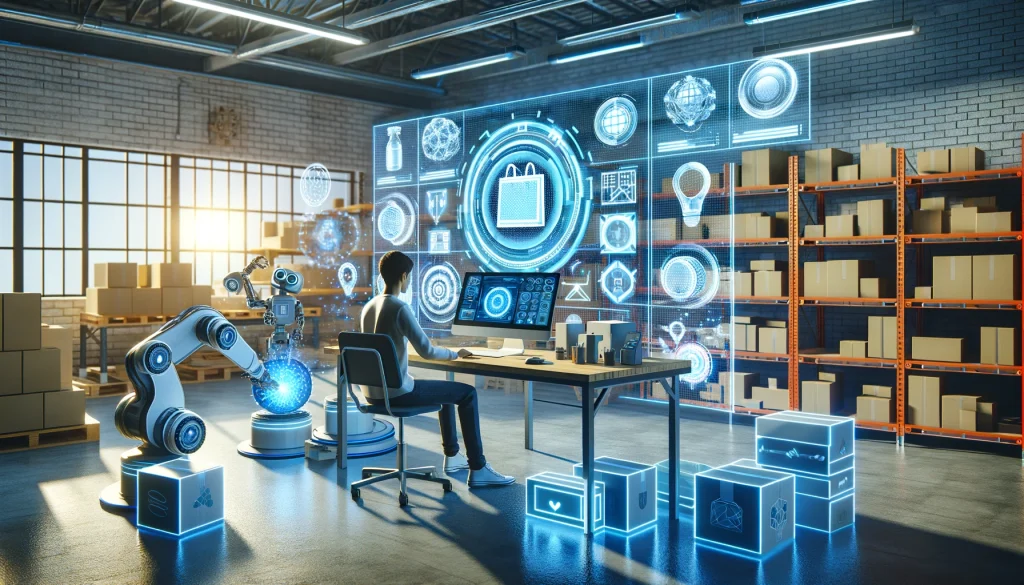In recent years, artificial intelligence (AI) has transformed various industries, from healthcare to finance, by enhancing efficiency, accuracy, and creativity. One sector where AI is making significant strides is packaging design. This blog post explores how AI is revolutionizing packaging design and what the future holds for AI-aided design processes in the industry.
The Evolution of Packaging Design
Packaging design has always been a critical component of product marketing. It not only protects the product but also serves as a crucial touchpoint for consumers, influencing their purchasing decisions. Traditionally, packaging design involved manual processes, relying heavily on the skills and creativity of designers. However, the advent of digital tools and technologies has significantly altered this landscape.
The Role of AI in Packaging Design
AI is now taking packaging design to new heights by automating and optimizing various aspects of the design process. Here are some key areas where AI is making a significant impact:
1. Enhanced Creativity and Innovation
AI-powered tools can analyze vast amounts of data from existing packaging designs, market trends, and consumer preferences. By leveraging machine learning algorithms, these tools can generate innovative design ideas that resonate with target audiences. Designers can use AI-generated suggestions as a starting point, refining and personalizing them to create unique and compelling packaging.
2. Predictive Analytics
AI enables predictive analytics in packaging design, helping designers anticipate consumer reactions to different design elements. By analyzing historical data and consumer feedback, AI can predict which colors, shapes, and materials are likely to attract more attention and drive sales. This data-driven approach reduces the guesswork in design, leading to more effective packaging.
3. Sustainability Optimization
Sustainability is a growing concern for consumers and companies alike. AI can assist in creating eco-friendly packaging by optimizing material usage and reducing waste. AI algorithms can suggest sustainable materials and design modifications that minimize environmental impact without compromising functionality or aesthetics.
4. Personalization at Scale
Personalized packaging has become a trend, with brands seeking to create a unique experience for each customer. AI can facilitate mass personalization by analyzing customer data and generating customized packaging designs that cater to individual preferences. This capability not only enhances customer satisfaction but also builds brand loyalty.
5. Efficiency and Cost Reduction
AI streamlines the packaging design process by automating repetitive tasks and reducing the time required for design iterations. This efficiency translates to cost savings for companies, allowing them to allocate resources more effectively. AI-driven automation also reduces the risk of human error, ensuring higher precision in the final design.
Case Studies: AI in Action
Several companies are already leveraging AI to revolutionize their packaging design processes. Here are a few examples:
1. Coca-Cola
Coca-Cola has utilized AI to create personalized labels for its products. By analyzing customer data, AI algorithms generated unique label designs that resonated with different demographics, leading to increased consumer engagement and sales.
2. Heinz
Heinz employed AI to redesign its ketchup bottles, focusing on improving the user experience. AI analyzed consumer feedback and suggested design modifications that made the bottles easier to use, resulting in higher customer satisfaction.
3. Nestlé
Nestlé has incorporated AI into its packaging design process to enhance sustainability. AI algorithms recommend eco-friendly materials and design changes that reduce the carbon footprint of their packaging, aligning with the company’s sustainability goals.
The Future of AI in Packaging Design
The integration of AI in packaging design is still in its early stages, but the future looks promising. Here are some trends and advancements we can expect to see in the coming years:
1. Augmented Reality (AR) Integration
AI combined with AR technology will enable interactive and immersive packaging experiences. Consumers can use their smartphones to scan packaging and access additional product information, promotional content, or even virtual try-ons.
2. Real-time Design Collaboration
AI-powered platforms will facilitate real-time collaboration between designers, marketers, and other stakeholders. These platforms will allow for seamless sharing of ideas, instant feedback, and quicker design iterations, enhancing the overall efficiency of the design process.
3. AI-Driven Market Research
AI will play a more prominent role in market research, providing deeper insights into consumer behavior and preferences. This information will guide packaging design strategies, ensuring they are aligned with market demands and trends.
4. Advanced Materials and Sustainability
AI will continue to drive innovations in sustainable packaging materials. Researchers will use AI to develop advanced materials that are not only eco-friendly but also cost-effective and durable. These materials will revolutionize the industry by offering sustainable alternatives to traditional packaging.
Conclusion
AI is undoubtedly revolutionizing packaging design by enhancing creativity, optimizing efficiency, and promoting sustainability. As technology continues to evolve, the potential for AI in this field is limitless. Companies that embrace AI-driven design processes will be better positioned to meet consumer demands, stay ahead of market trends, and achieve their sustainability goals. The future of packaging design is bright, and AI is leading the way.
By staying informed about the latest advancements in AI and incorporating them into their design processes, businesses can create packaging that not only stands out on the shelves but also resonates with consumers on a deeper level. The journey of AI in packaging design has just begun, and its impact will only grow stronger in the years to come.


